[dropcap]S[/dropcap]amsung was the notable absence at Mobile World Congress this year, and somehow the conference felt rather different for it. Unlike 2016, where we had a dominant smartphone announcement and everyone else trying to play for second place, in 2017, everyone was sort of in a bit of a clamour and strong contenders were hard to find.
As we know, Samsung was going to wait a few weeks in order — it was speculated — to get the polish on its new Galaxy S8 range just right. MWC wrapped up in the first week of March, and Samsung waited until the end of March to do its show in New York … and while it might only have given Samsung as much as an extra four weeks, it appears to have made quite a bit of difference. That, and as we all know, Samsung are quite literally at the top of the smartphone game when it comes to the combination of years of experience, design nous, and creating something that people simply must have.
How do we know this? Well, it should come as no surprise that the Galaxy S8 range is breaking all pre-order records, and now, having spent just under a week with the Galaxy S8, we understand why. Having gone hands-on with every phone from Mobile World Congress that matters, this phone is — without a doubt in my mind — one of the most polished handsets I’ve ever seen. Only one phone from this year’s launches comes close, and that’s Huawei’s P10, and while I like that phone a great deal, I have to be a realist. It won’t top the Galaxy S8 across the board, though it is better in some areas.
Let’s take a walk through the Galaxy S8, so you can decide whether this might be your next smartphone too. As an editor’s note, you might notice we’re doing this review a bit differently to how we’ve done them in the past. This is deliberate; please let us know what you think.
Galaxy S8 What’s inside?
While Samsung’s Galaxy S8 range will showcase the much talked about Qualcomm Snapdragon 835 processor in some markets, Australia is not one of them; instead, we have Samsung’s own Exynos 8895 Octa-core CPU. We don’t have a Snapdragon variant to compare to, but in the past, we’ve found Exynos processors to be just as capable, if not more so, and early indications are the Galaxy S8 is a bit of a speed demon.
These days, though, more people care about storage and then RAM, and the Galaxy S8 has both, in spades. Standard inclusion is 4GB RAM and 64GB of storage, which you can expand with MicroSD up to 256GB. That’s plenty of room for music, photos and more .. though really, you can store all these in the cloud anyway, so phone storage beyond 64GB is arguably not that important (for me, at least).
There’s a number of standard features which don’t really deserve a mention, but there are some key stand-outs, too. For example, the Galaxy S8 is the first phone on the market to support Bluetooth 5.0, which allows you to have two paired audio devices at once simultaneously playing music. Quite cool. There’s also two f/1.7 cameras — front and back — delivering some of the best mobile photography around. IP68 rating, Samsung Pay, Android Pay, and there’s still a headphone jack. You’ll not be left wanting.

Similarly, in the box there’s the usual suspects. A box full of important papers which no one reads, a supplied set of headphones, a USB-C cable, a MicroUSB/USB-C adaptor, and a Samsung Switch dongle for bringing your data from an older device.
All of this comes in a lovely black box with a nice premium feel which goes well with the phone itself. In terms of in-hand feel, the Galaxy S8 is great, if not a little slippery. Our review model is midnight black, and everything is black. Sorry, we don’t have any blacker — this is it. In terms of size, its a couple of millimetres taller than the Galaxy S7, but otherwise it feels much the same.
Galaxy S8 What’s it good at?
There’s some main areas of the Galaxy S8 that I’m rather impressed with. The first is the camera, which I’m going to talk a bit more about below, but it takes what was great about the Galaxy S7 camera, refines it a little, and just makes it overall better.
Then there’s the software. Even as recently as last year, the software on the Galaxy S7 wasn’t exactly great. It still felt like it was in a state of transition, from overly TouchWiz like the Galaxy S6, and the much, much better Grace UX which finally debuted on the Note 7. I’m pleased to note that Grace UX has made its way onto the Galaxy S8 range, and it’s beautiful.
Standard design elements from Android 7 Nougat are here too. While the Galaxy S7 presented as an easy upgrade from the Galaxy S6, the Galaxy S8 presents as an easy upgrade from just about anything, because the common elements will make it so easy to jump on board.
The notification drawer looks like most others, the notifications look and work like others, the settings are easy to navigate, and while the default launcher isn’t to my tastes, it is at least easy to use (and just as easy to replace with something else if you really don’t like it).
This brings me to battery life; the 3,000 mAh battery in the Galaxy S8 is not class leading, but Samsung have clearly learned a thing or two about optimisation and making the most of what’s inside. I won’t proclaim that the Galaxy S8 will last a whole day of heavy usage, because it just doesn’t seem that it will.
While power users might be left a little short, most users will get a lot from Samsung’s Galaxy S8.
However, for the average user who doesn’t sit on their phone all day, and uses it for a bit of music here and there, browsing the web on the loo, and sending some messages to their family and friends while at work, the Galaxy S8 will easily last until the evening. That’s more than good enough for most people, and for everyone else, fast charging over USB-C means that you really won’t have any battery qualms.
The setup experience was top-notch as well. Setting up the Galaxy S8 took little more than punching in my Google account details, agreeing to a heap of terms and conditions, and letting it restore all the apps from my last-used phone. The only hiccup? I tried the Samsung Switch service, to bring my old SMS across, but the required app isn’t available for all handsets, meaning I couldn’t use it. A missed opportunity indeed.
Of course, Samsung have included a bunch of apps out of the box, but none of them are intrusive or unwelcome. You can remove many, and disable the rest if you really must, but honestly you will use some of these, especially the Microsoft suite if you get yourself a Samsung DeX dock (which we’ll be reviewing soon).
Other nifty and welcome features include VoLTE if your carrier supports it which means Crystal clear HD audio for your voice calls. There’s also Voice over WiFi, or VoWiFi, which a few carriers now support as well. I’ve tested both these on Telstra, and they’re very cool – VoWiFi is great where you have a reliable WiFi but no cell signal. You can still make calls as usual, though you won’t get SMS until you get cell reception back.
These are just some of the cool and useful features in the Galaxy S8. It’s not that any of this is especially unique by itself; it’s that all these features are in the one phone. The short answer to what is the Galaxy S8 good at?
Pretty much everything that matters.
Galaxy S8 How’s the camera?
First, some technical details. The primary rear camera is the same as last year’s. In fact, all key specifications are identical; we have a 12MP resolution, f/1.7 aperture, 26mm focal length sensor with phase detection auto-focus, optical image stabilisation and an LED flash.
As we found last year, this camera setup is awesome across just about anything that you’d care to throw at it. Do you like taking photos of things close up? You can do that. Capturing your kids playing at the park? Check. Some great shots at the football? Okay. What about night photos? Yeah you can do those.
What’s better this year is that you can do all of those fine things with the front camera as well; it has virtually the same configuration, so your selfies at night will look good, you can capture yourself playing at the park, and if you’re playing football and somehow secreted your phone onto your person, I guess you’d get some stellar self-action shots there, too.
I loved how effortlessly the Galaxy S8 captured these photos. Seriously, no effort was really put into these at all and great, vivid photos that perfectly captured the moment were taken. Of course, if you take a little more time to compose your photos and get everything just right, you can get some even better shots. Flowers are a favourite of mine for testing cameras out, and the Galaxy S8 doesn’t disappoint there either.
Even the shots in the fading sun and at night did not disappoint. Even a relatively complex photo, with lots of light sources around, was handled rather well I think, and this brings me to a bit of a revelation. The Galaxy S8 has a camera that you just don’t need to think about; it’ll do the job, do it well, and do it without really any thought whatsoever.
I’ll caveat these photo samples just once; we’ve had a very limited time with the Galaxy S8, and thus limited opportunity to try out a full range of environments to really test the camera to its full extremes. However, in the few short days we’ve had, my main boxes have been ticked — macro photography, photos of food and kids, playing at the park, and night shots when out and about. I really don’t care about much else .. and equally, I can say confidently that the Galaxy S8 will handle whatever else I throw at it anyway.
Galaxy S8 What’s it not so good at?
Usually this isn’t a hard question to answer; there’s always an obvious flaw or two with a smartphone that really stands out even after only a couple of days of use. With the Galaxy S8, there are a couple of flaws and they were quickly identified. However, I’m not entirely sure they’re showstoppers.
First, there’s the fingerprint sensor. Most phones have these in 2017, and we know how they work. There have been various experiments with where to best put these, and if you ask around the traps at Ausdroid, the rear mounted sensor seems to work best in most situations. Motorola, Apple and Huawei have experimented with front-mounted sensors, Sony even toyed with side-mounted sensors, and all of these have their pros and cons. Generally speaking, though, in my experience the rear mounted sensors are most practical, though I grew to quite like the front placement on the Huawei P10.
While it’s on the right side of the phone — the back — the fingerprint sensor on the Galaxy S8 sucks. Strong language, I know, but it does. The placement is inconceivably stupid and just feels like someone at Samsung was asleep on the job.

You see, on the Galaxy S8, the fingerprint sensor is RIGHT next to the camera, and we do mean right next to. Better still, it’s only slightly indented, making it somewhat difficult to locate with your finger. This means two things — one, it’s difficult to use meaning you’ll probably not want to use it to unlock your phone, and two, your camera lens is going to be literally buried in oily deposits from your misplaced fingers.
Fortunately, other biometric unlock methods — such as iris scanning or face recognition — work very well.
So much is this so, that Samsung have even recognised the problem and included an alert to clean the lens every so often to remove fingerprints. Seriously.
This is a major design flaw, and could have been easily addressed; instead of putting the sensor right next to the camera, do what Google or LG have done with the Pixel and G6, and place it below the camera, in its own location, which the finger can more easily find. It would’ve been easier to use, and would prevent photos being ruined by ugly fingerprints on the lens.
It’s a pain in the ass, and one that could’ve been so easily avoided. I really don’t know what Samsung were thinking.
My only other gripe is the texture of the phone itself. Sure, that polished glass look is rather beautiful to behold. HTC have used a similar surface appearance on the HTC U line, and while we liked it there too, the same issue arises. It’s a slippery surface, and one that isn’t made any better by the addition of natural oils from your hands and skin. In fact, those can act like a lubricant, meaning the phone can be harder to hold onto than a greased pig.
This is one phone where we recommend that a case is an absolute must, if you are to protect your investment. Fortunately, as the Galaxy S8 is going to be one of the biggest selling smartphones of the year, there will be a mountain of case options to choose from, and you’ll be able to buy them just about anywhere. Hell, I picked one up at JB Hi-Fi over Easter weekend,
No doubt we’ll review some in weeks to come.
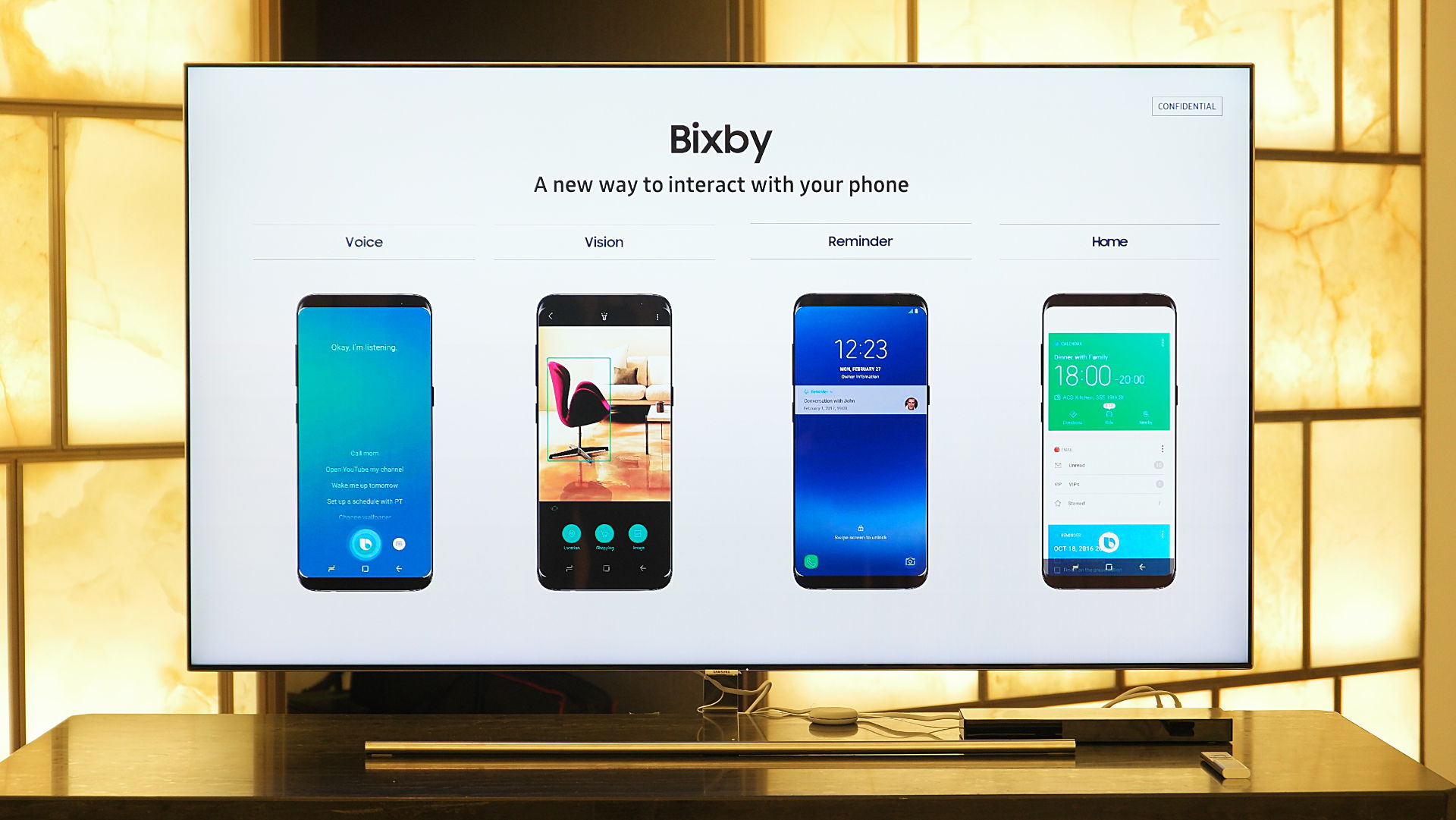
Last but not least is Samsung’s Bixby. Maybe its just because I haven’t been wowed by a presentation from Samsung executives, or that I haven’t paid too much attention to what problem it is that Bixby is meant to address … but it just feels like a “What is this and why do I actually need it” sort of feature.
It seems to be a sort of hybrid between Google Now (think information in cards which you can swipe off) with Google Assistant (a voice powered AI thing), which allows users to easily access weather, reminders, alarms, shop on the go, etc etc.
However, at launch in Australia, Bixby’s voice search isn’t included and I just found the whole feature kind of odd. Very quickly I downloaded a free app to re-map the Bixby button to something else, and now it loads Google Assistant. Much more useful, though we hear that Samsung might be onto this move, and will prevent users from remapping the button to something more useful.
Galaxy S8 Should you buy one?
There’s no doubt in my mind that the Galaxy S8 is a great phone. It’s powerful, it’s fast, it looks and feels great, it does everything that you could expect a phone to do, with a great camera, and a battery that’ll last a full day for most people. It shows that this is the eighth phone in Samsung’s Galaxy S line, and as someone who’s used every phone in the range, Samsung’s experience and knowledge shows through.
Seven years marking premium, flagship smartphones means that Samsung knows what they’re doing, and it really should come as little surprise, then, that the Galaxy S8 is one of the best phones you can buy today, and probably will be for the rest of this year.
Of course, there’s a touch of a price premium to pay for such a thing, and with the Galaxy S8 starting at $1,199 and up to $1,349 for the S8 Plus variant, these phones aren’t super cheap, though they are in keeping with the premium pricing we’ve seen in past years. The Galaxy S7, for example, started at $1,149 but this year’s phone has twice the storage capacity at only $50 more.
That doesn’t mean you need to spend your hard-earned cash all at once. There’s a huge range of Galaxy S8 plans on offer, from some unlikely players, offering some really good value. Take a look at some of these:
I know a lot of people who haven’t bought premium smartphones in the past who are considering the Galaxy S8, and for good reason. The plans on offer are quite competitive, and offer a great way to get into a new phone with good inclusions without any up-front investment.
As someone on a month-by-month phone contract, I could readily re-sign on a competitive plan and add the Galaxy S8 … and if I didn’t have one to review, there’s a good chance that I’d probably be going to do this.
Yes, you should probably consider buying one. The Galaxy S8 will probably be the best-selling phone of the year, and having read my review, you’ll have no questions as to why that is. As much as I’d like another brand to come out with the best phone of the year, it probably won’t happen in 2017… however, come 2018, Samsung needs to be worried. There’s a couple of other smartphone brands getting very, very close.
Disclosure Statement
Samsung has allowed Ausdroid to retain the Galaxy S8 review unit for update and accessory reviews.

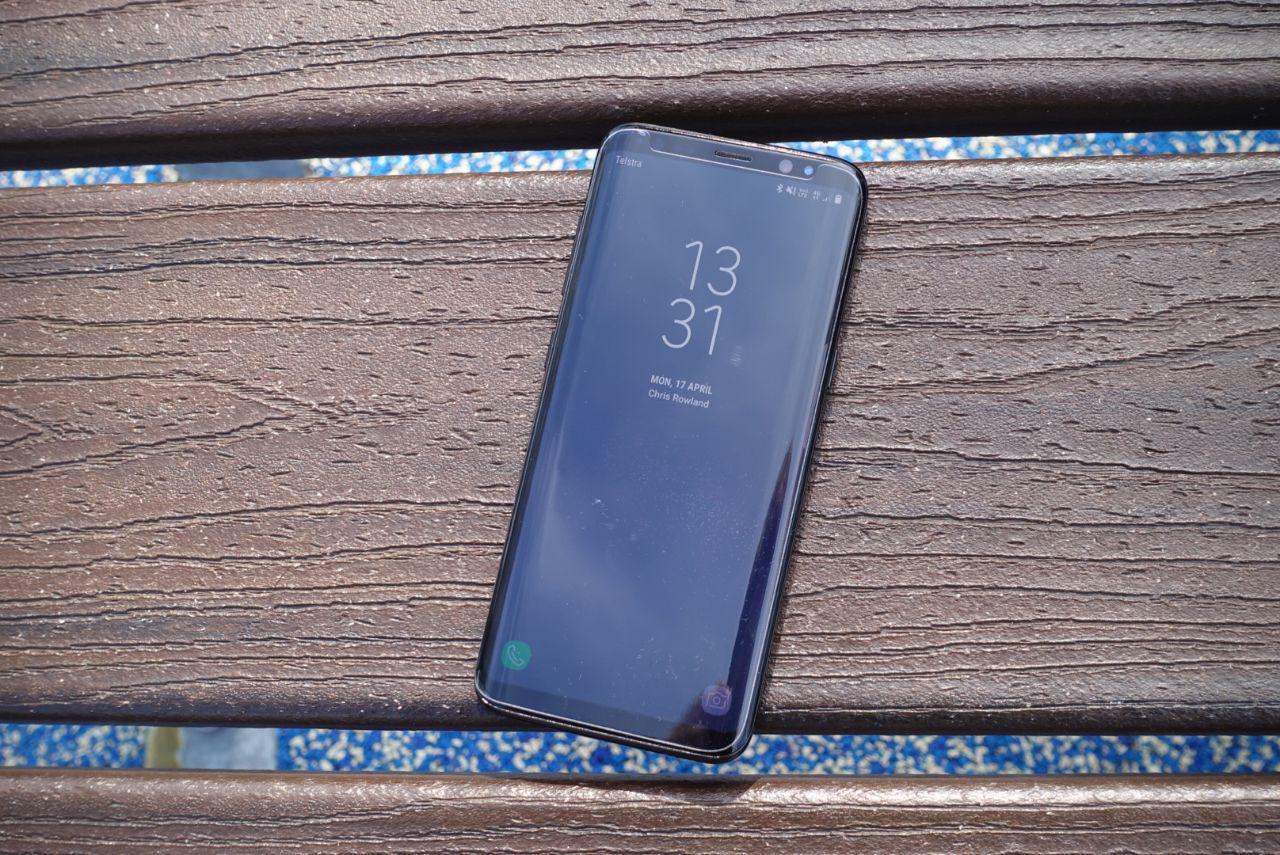




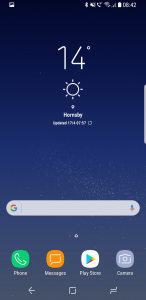
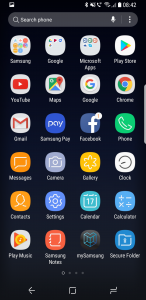

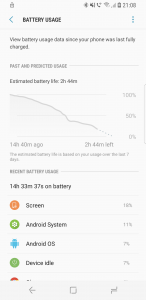















Hi Chris. I know this article is rather old. But can I ask a question? Does the phone have to be rooted before the Bixby Button can be re-mapped? Just bought the S8 and was wondering what to do with Bixby.
I was able to remap it without root; I never rooted the handset. That said, I don’t know if those tricks still work as Samsung actively tried to defeat them.
Hey Chris, nice review. I don’t mind the new format but also don’t particularly favour it. I do like the scoring out of 100 better though. Anyway, two points. Firstly, could we stop regurgitating the same incorrect information about the camera hardware on the S8s. I don’t know why nearly the entire tech world (few exceptions like Erica Griffin exist) decided that it was the exact same hardware as S7 (I think Sammy were a bit misleading in their launch). Yes, it has the same specs but the sensor (arguably the most important part in the camera hardware, together with… Read more »
Thanks for the insightful comment. You’re right, the information coming from Samsung about what’s inside the S8 hasn’t been as thorough as we’d like but we make do. Thanks for pointing out the camera details. As with HD Voice, you’re right mostly. HD Voice was possible on some 3G handsets, as I do recall Telstra offering it some years ago, though it was rather less common. Many carriers both here and overseas have tied it to VoLTE only because of the extra bandwidth available – far easier to do HD on LTE than it was on 3G. As for call… Read more »
Great review Chris .. I went and held both of the display models today and I can’t believe how small the s8+ feels in the hand for such a big phone.. very impressed!
Thanks for the review !
I heard elsewhere the local models have Google Assistant already mapped to the Bixby button as standard? Is that true?
May be in markets where bixby is not available yet.
Our review unit certainly didn’t have Bixby mapped to Google Assistant; it loaded Bixby straight up.
Great, honest review. Format works well also.